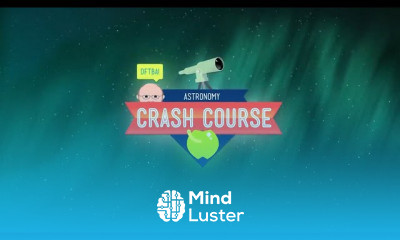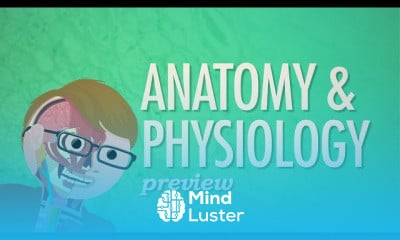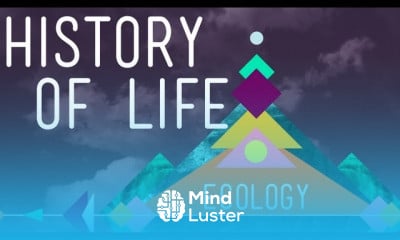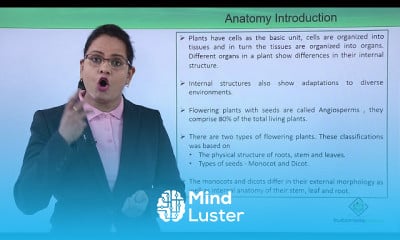Digestive System Part 2 Crash Course A P 34
Share your inquiries now with community members
Click Here
Sign up Now
Lessons List | 48
Lesson
Show More
Lessons
Comments
Related Courses in Science
Course Description
Anatomy and physiology are two of the most basic terms and areas of study in the life sciences. Anatomy refers to the internal and external structures of the body and their physical relationships, whereas physiology refers to the study of the functions of those structures. What are the basics of anatomy and physiology?
Basic Anatomy and Physiology. Anatomy and physiology is the study of the body's systems and structures and how they interact. Anatomy focuses on the physical arrangement of parts in the body while physiology is the study of the inner functioning of cells, tissues, and organs. What is learned in anatomy physiology?
What You'll Learn in Anatomy and Physiology. In Anatomy and Physiology, you're going to learn about body systems, organs, muscles, bones, tissue types, nerves, organ systems, immune system, cells, and more. What are the three types of anatomy?
Gross anatomy is subdivided into surface anatomy (the external body), regional anatomy (specific regions of the body), and systemic anatomy (specific organ systems). Microscopic anatomy is subdivided into cytology (the study of cells) and histology (the study of tissues). What are the 12 organs of the body?
They are the integumentary, skeletal, muscular, nervous, endocrine, cardiovascular, lymphatic, respiratory, digestive, urinary, and reproductive systems. Only the reproductive system varies significantly between males and females What are the 5 branches of anatomy?
Anatomy is the field of science concerned with the study of the physical structures of organisms. It's divided into several branches, including histology, embryology, gross anatomy, zootomy, phytotomy, human anatomy, and comparative anatomy. What are the 11 systems in the body?
The 11 organ systems include the integumentary system, skeletal system, muscular system, lymphatic system, respiratory system, digestive system, nervous system, endocrine system, cardiovascular system, urinary system, and reproductive systems. Is basic anatomy and physiology hard?
Anatomy and physiology is difficult but very doable! ... With physiology, it becomes more challenging when you have to remember (and I mean really memorize) complex processes and functions of different components of the human body in exact detail.
Trends
C Programming Language
Communication Skills
MS Excel
Learning English Speaking
program in c language
Python programming language
Python for data science and AI
Web development with Java spring
Digital Marketing Beginners
English greetings and responses
UX design foundations for beginners
Web Design for Beginners
AI fundamentals for beginners
Java Programming Language
Logo Design
Excel skills for busines intermediate
Creating bitmap images from scratch
Building arduino robots and devices
Organization and Architecture COA
Video editing with adobe premiere
Recent
Morning Yoga workout power flow
Yoga shoulder stretches for tension
Gentle morning Yoga flow for beginners
Yoga workout for upper back
Yoga for toned legs and glutes
Yoga deep hip stretch for beginners
Morning Yoga flow for energy
Hands Yoga flow for strength
Yoga workout for toned legs
Yoga for sleep and relaxation
Yoga for lower back pain at home
Detox Yoga for digestion
Chair Yoga for tension relief at home
Yoga for shoulder mobility
Yoga workout for strength
Yoga for Inner thigh flexibility at home
Yoga for restless legs relief
ASMR Yoga for sleep
Yoga wheel stretches
Yoga workout for arm strength


















